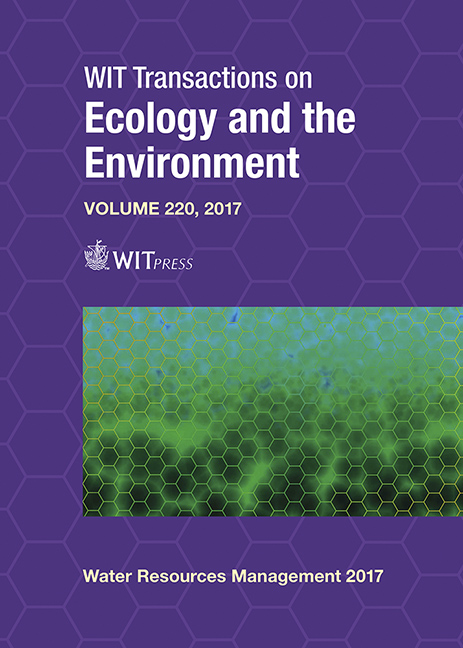PREDICTION OF CHANGE IN HYDROLOGIC CYCLE COMPONENTS IN NORTH KOREA RIVER BASINS: THE RCP8.5 CLIMATE CHANGE SCENARIO
Price
Free (open access)
Transaction
Volume
220
Pages
10
Page Range
263 - 272
Published
2017
Size
781 kb
Paper DOI
10.2495/WRM170251
Copyright
WIT Press
Author(s)
SE JIN JEUNG, BO RA KWON, BYUNG SIK KIM
Abstract
North Korea is particularly vulnerable to natural disasters related to climate change, such as flooding and drought, as its forest ecosystem has been damaged as a result of excess development due to food and energy shortage. To prepare for potential natural disasters and to come up with effective countermeasures against climate change, it is crucial to make use of systematic and scientific weather and climate forecasting information in the best possible way. However, it is difficult to find hydrologic data for North Korea, and direct observations of the nation’s hydrology are practically impossible to make. Therefore, because of the difficulties in collecting hydrological data, studies on climate change and hydrology in North Korea are rarely conducted. This study collected precipitation and temperature data from 27 weather stations located in North Korea (provided by the World Meteorological Organization), and used the RCP8.5 climate change scenario of the Korean Meteorological Administration to calculate potential future evapotranspiration for each station. The study applied a lumped conceptual model (Water And Snow Balance MODeling system (WASMOD)) to North Korea’s representative river basins (Daedong River, Aprok River) to obtain a supplementary hydrologic data time series through doing calculations based on the calculated time series data of the future hydrologic cycle components of North Korea. The study analyzed the impact of climate change on the hydrologic cycle process of North Korea using the RCP8.5 climate change scenario, and predicted its influence on water resources at a river basin scale.
Keywords
RCP8.5 climate change scenario, North Korea, hydrological cycle components, time series analysis





